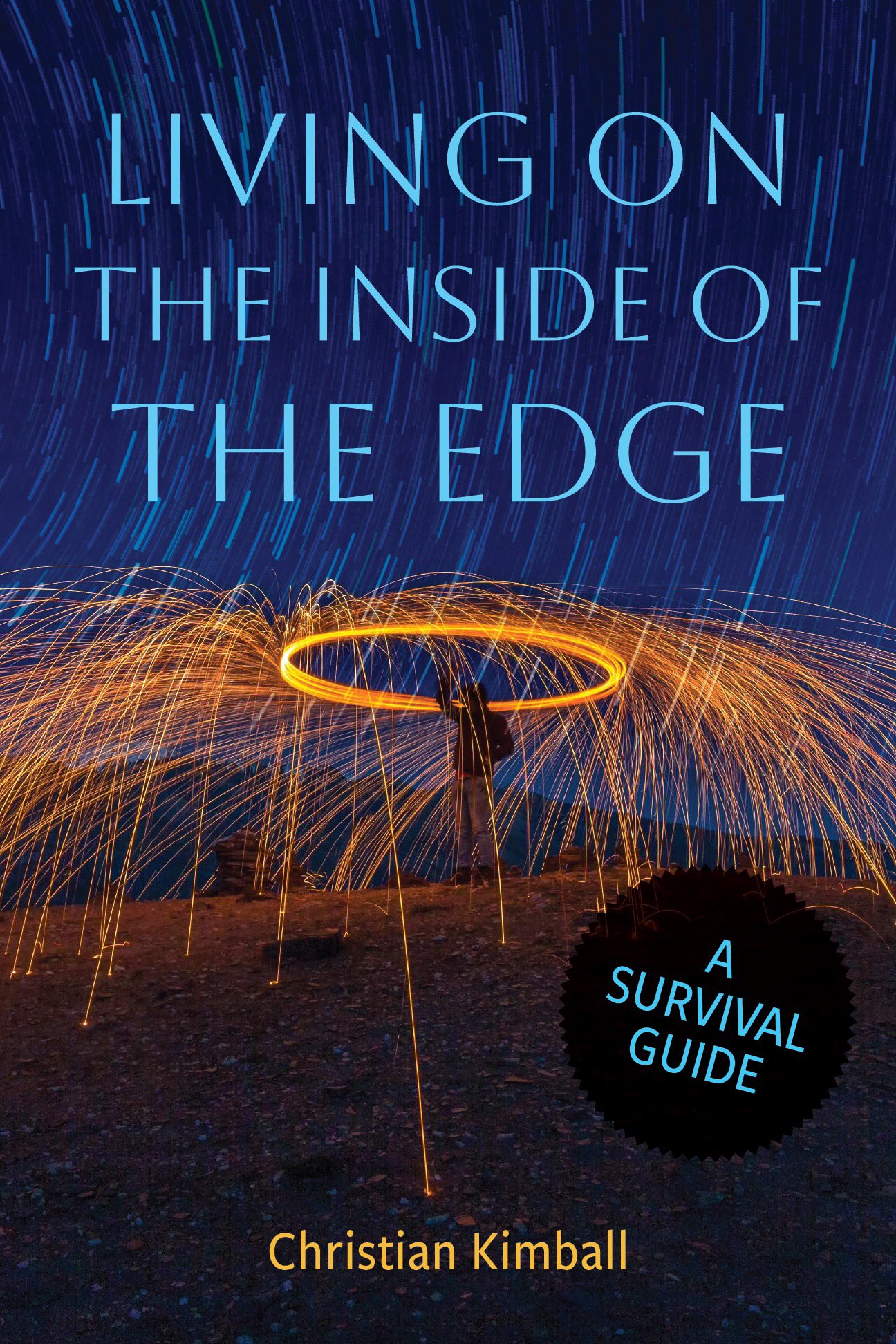Title: Living on the Inside of the Edge: A Survival Guide
Author: Christian Kimball
Publisher: BCC Press
Genre: Religious Non-Fiction
Year Published: 2023
Number of Pages: 330
Binding: Paper
ISBN-13: 978-1948218788
Price: 12.95
Reviewed by Ian Thomson for the Association for Mormon Letters
In the very best sense of the genre, Christian Kimball has delved into the world of self-help guides with a very specific audience in mind: those who struggle with aspects of Mormonism (putting us “on the edge”) but nonetheless decide to stick around for a while (making for the inside of the edge). How does such a person survive in the Church? Living on the Inside of the Edge: A Survival Guide is Kimball’s response. If Patrick Mason’s Planted asks, “why might I stay?” Kimball’s book asks, “how might I do it?” After a faith crisis or undergoing a significant transformation of one’s faith, a member of the Mormon Church might find themselves asking, “what do I do now that I am on the other side of crisis? Where do I go from here if I’ve decided not to completely leave?” If anyone has read Richard Rohr’s work, Falling Upward, and wondered what a Mormon ‘second half’ of life looks like, this book attempts to paint such a landscape.
Importantly, this is not a checklist book; it is not a “ten keys to success” or “seven habits” sort of project. Instead, Living on the Inside of the Edge is a book about spiritual differentiation. In other words, how does one develop an adult-to-adult relationship with the church and its leaders? Ultimately, it’s about navigating one’s own religious life with the Mormon Church as a spiritually mature adult. At one point, Living begs the reader to acknowledge, “I’m for real; I’m an adult; I know what I’m doing; I belong because I want to, not because you give me permission.”
Depending on what you’re looking for, the Living could prove a bit frustrating because it likely asks more questions than it answers. But then again, the very premise of the book is that it adheres to a fundamental insistence that there is no single right answer, nor objectively right or wrong decisions, but only answers and choices that work for you. The book’s challenge to the reader is to begin the hard work of answering the many questions it poses, which will very likely prove to be a life’s work. Kimball reminds us that even when we’ve worked out a system that gives us some footing, it will likely change over time because we will too. For Kimball, under this scenario, our lives become an experience where there is no sure thing, and every step along the way is an uncertain proposition, “where decision making is a wisdom practice that takes time and study and effort and ends in measured risk-taking.”
Notably, this book is not about how one might fix the Church, nor a laundry list of what needs to change to make the Church better. As a survival guide, the primary exercise it has in mind is largely an eyes-wide-open assessment of the actual current Church, managing realistic expectations, and then a determination of ways we can cope and choose to react.
For all of Living‘s emphasis on a philosophical approach, it contains a startling amount of practical advice. With chapters dedicated to commandments, sex, anger, polygamy, “Magical Thinking,” talking to one’s Bishop, the Temple Recommend, callings, community shibboleths like coffee and garments, and more, Kimball takes a measured and reflective approach to what consideration a member at the edge might use in fashioning a new relationship with the Church—one that truly works for them. Recognizing the limitations of his own experience, Kimball has thoughtfully included entire essays in the last section by individuals who find themselves in circumstances that may have pushed them to the margins of our community. Each of them takes the opportunity to reflect on their own experiences which are shared by many individuals at the inside of the edge, including a woman (Susan Meredith Hinckley), a single adult (Mara Haslam), a gay male member (David Doyle), and a black member (James Jones). In addition, Kimball includes several essays by him and others addressing the particular challenges that accompany living on the inside of the edge, including what to consider when raising children, raising feminist boys in the church, the challenge presented by having an LGBTQ child and dealing with more orthodox family members.
Nevertheless, there is a bigger project the book has in mind, one that every conscientious disciple can share. Maybe the most subversive thought for the Orthodox Member might be the following assertion:
“Hopefully, you are interested in learning the gospel, developing faith in Jesus Christ, working out the meaning of salvation, finding God. The analysis [here] suggests you need to be about that business largely on your own. The institutional Church provides some tools and some learnings, but the idea that the Church equals gospel is so deeply ingrained that Church teachings may be confusing and may even require some unlearning.”
Ultimately, the true disciple may conclude that survival means having to relegate the institutional Church to its deserved place: a secondary one. We’re the adults here; we are children no longer.
In summary, this Living‘s underlying thesis is that when faced with challenges within the Church, the options are not limited to doubling down and renewing one’s commitment or leaving the Church. Instead, “the subject of this book, is to take on the essential chaos of the universe, the absence of the sure thing, and go forward making your own meaning for life.” In its essence, Living on the Inside of the Edge: A Survival Guide is simultaneously an invitation and a charge. And an exciting one at that. It may turn out that the path forward is not really one of how to merely survive but an adventure that affords such a sojourner the possibility to truly thrive.

